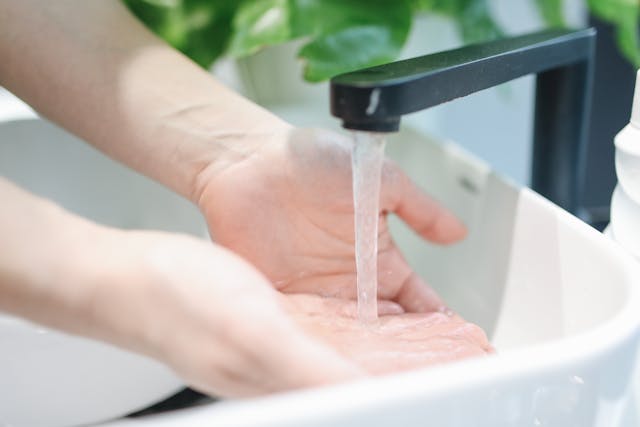A faucet with a tight base can be frustrating, especially when it starts leaking or becomes difficult to maneuver. Learning how to fix a faucet with a tight base is not just a valuable skill but also a money-saving solution. Often, such problems arise from wear and tear, dirt accumulation, or improper installation. However, the good news is that most faucet issues can be resolved without professional help.
In this guide, we’ll explore step-by-step methods to fix your faucet, tools you’ll need, and common mistakes to avoid. By the end, you’ll have all the knowledge you need to address this issue confidently.
Identifying the Problem With The Faucet and the Base
Before you can effectively fix a faucet with a tight base, it’s crucial to understand the root cause. A faucet with a tight or stuck base might show symptoms such as:
- Restricted movement of the spout or handle.
- Leaks around the base area.
- A grinding or squeaking noise when the faucet is used.
Inspect the faucet thoroughly for signs of mineral buildup, rust, or loose components. This will guide your approach to fixing the problem.
Essential Tools and Materials
To fix a faucet with a tight base, gather these tools:
- Adjustable wrench.
- Allen wrench or hex key.
- Screwdrivers (flathead and Phillips).
- Plumber’s tape.
- Vinegar or a descaling solution.
- Lubricant (like silicone grease).
- Soft cloth or sponge.
Having these items ready will streamline the process and ensure you can tackle any unexpected issues.
Preparing the Workspace
Before starting any repair work:
- Turn Off the Water Supply: Locate the shutoff valves under the sink and close them tightly.
- Drain the Faucet: Open the faucet to release any residual water in the pipes.
- Cover the Sink Drain: Use a cloth or stopper to prevent losing small parts during disassembly.
Step-by-Step Guide to Fixing a Faucet with a Tight Base
Loosening the Base
To begin, gently loosen the base of the faucet:
- Use an adjustable wrench or pliers to unscrew the base.
- Apply a descaling solution if it feels stuck due to mineral buildup.
- Work slowly to avoid damaging the faucet finish.
Cleaning and Inspecting Components
Once the base is loosened, disassemble the faucet:
- Clean all components using a vinegar solution to remove debris or rust.
- Inspect washers, O-rings, and seals for wear and tear.
- Replace any damaged parts to prevent leaks.
Replacing Worn-Out Seals
Worn-out seals are a common cause of tight bases. Here’s how to replace them:
- Remove the old seals carefully.
- Clean the grooves where the seals sit.
- Install new seals, ensuring they are snug but not overly tight.
Lubricating the Base
Apply lubricant to ease the movement of the base:
- Use silicone grease for long-lasting results.
- Apply it sparingly to avoid residue buildup.
- Reassemble the base and test its movement.
Tightening the Faucet Base
Secure the faucet base to avoid future issues:
- Use plumber’s tape to seal any threads effectively.
- Tighten the base gently, ensuring it’s firm but not overly tight.
- Test for leaks by turning on the water supply.
Common Mistakes to Avoid
When fixing a faucet with a tight base, avoid these errors:
- Over-tightening the base, which can crack components.
- Using harsh chemicals that can damage the finish.
- Forgetting to turn off the water supply, leading to unnecessary messes.
Preventive Measures
After fixing your faucet, adopt these habits to prevent future issues:
- Regularly clean the faucet to avoid mineral buildup.
- Use a water softener if your area has hard water.
- Check and replace seals and washers periodically.
Hiring a Professional
While most faucet issues can be DIYed, consider hiring a plumber if:
- The faucet remains stuck despite your efforts.
- You notice extensive internal damage.
- You lack the necessary tools or confidence to proceed.
Conclusion: Fix a Faucet with a Tight Base
Knowing how to fix a faucet with a tight base is an essential skill for any homeowner. By following these steps, you can save time, money, and the hassle of hiring a professional. Regular maintenance, proper cleaning, and careful handling are key to keeping your faucet in excellent condition.
Remember, with the right tools and guidance, you can address most faucet issues on your own. Empower yourself with the knowledge shared in this guide and tackle any tight faucet base confidently.





